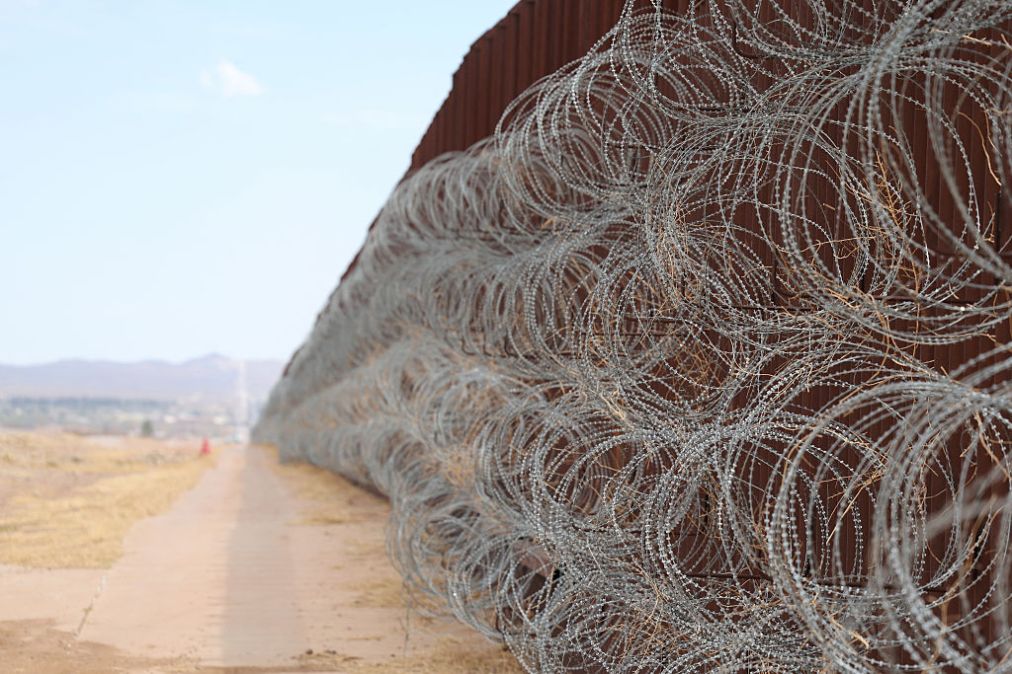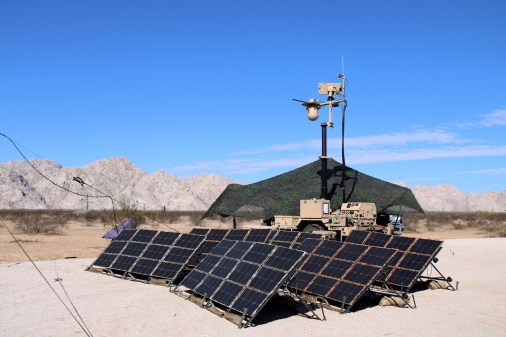DOD to deploy counter-drone capabilities at US-Mexico border as cartels surveil troops

The Pentagon is preparing to deploy counter-drone capabilities around the U.S.-Mexico border as part of its ongoing support of the Trump administration’s immigration enforcement and security mandates there, two senior defense officials told lawmakers Tuesday.
“[President Donald Trump] has issued several executive orders directing the Department of Defense to take all appropriate and lawful measures to ensure the complete operational control of the border. The department, in turn, is responding by preparing the path for employment of [counter-small uncrewed aerial system or CsUAS] activities along the border — both in support of DOD interests and in support of [the Department of Homeland Security] as the lead federal agency,” said Mark Ditlevson, acting assistant secretary of defense for homeland defense and hemispheric affairs.
Ditlevson and Rear Adm. Paul Spedero Jr., Joint Chiefs of Staff vice director for operations, J3, revealed those plans in written and oral testimony during a House Military and Foreign Affairs Subcommittee hearing about recent reports of unauthorized drone activity that threaten U.S. national security.
“We know that cartels have used [uncrewed aerial systems or UAS] for unauthorized surveillance to assess our troop size, our movements, to solicit and enable attacks from other vectors. We know that they have used drones for kinetic attacks,” Spedero said.
The rapid emergence, proliferation and application of drones are fundamentally shifting the way that militarized groups and other adversarial organizations conduct warfare.
The two witnesses discussed with lawmakers DOD’s still-ongoing responses to several recent high-profile incidents that impacted military officials and American civilians domestically and abroad over the last few years, including in New Jersey and at Joint Base Langley-Eustis in Virginia.
Ditlevson and Spedero confirmed that the Pentagon is moving to buy hardware and software assets designed to help combatant commanders better understand their operating environments and their commands’ capacity to conduct non-kinetic and kinetic defense against UAS threats.
Among other remedies, they also said DOD officials have identified and are pursuing a range of policy, process and technology improvements to govern and streamline DOD’s execution of counter-UAS activities.
However, several lawmakers warned that on some U.S. defense installations — and now, particularly at the southern border, where Trump recently authorized the military to take control — service members have suggested that they’re still not confident in gauging when and if they are permitted to respond to incursions from unidentified drones.
“This is the burden of command, and you need to understand that if there is something that is assessed as a threat to your forces and your installation, you not only have the authority, but the responsibility to act. I would counter that they have authority right now on the southwest border to engage UAS,” Spedero noted.
In their written testimony, he and Ditlevson further stated that “transnational criminal organizations are adapting to our operations by using drones to track the movements of U.S. Customs and Border Patrol agents and DOD forces near the border” and that the department is puzzling out an associated initiative to defend against small UAS in the near term.
They did not share implementation details or comment on possible policy changes and capabilities updates that need to be completed for the CsUAS “path to employment” to come into fruition.
“It’s critical — the cartels are using drones to surveil our military and law enforcement at the border. That’s not good, and they’re going to use everything they can to find holes that will then dictate their behavior. So yes, we need to have counter-drone technology there,” subcommittee Chair Rep. William Timmons, R-S.C., told DefenseScoop after the hearing. “If the border patrol is saying it’s a problem, it’s a problem.”






